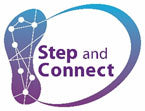Backwards Walking: A sensitive measure to detect fallers
Backward walking has been found to be a more sensitive measure to identify fallers than forward walking in Parkinson's Disease, but also in older adults, Multiple sclerosis, Stroke, and Traumatic Brain Injury. It may be used to reveal mobility impairments better than forward walking. Compared to young adults, backward walking in older adults ...
Continue reading
